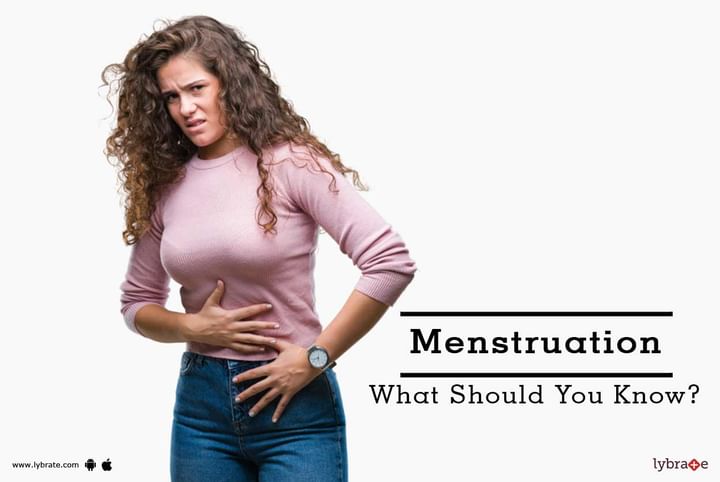Menstruation - What Should You Know?
Menstruation facts
• Menstruation is a monthly shedding of a female's uteral lining; it lasts about 3 to 5 days (average) and contains blood and tissue that exits her body through the cervix and vagina – the first day of menstruation is the first day of your period.
• The menstrual cycle is the recurrent approximately monthly menstruation.
• The menstrual cycle is the hormonal driven cycle; day 1 is the first day of your period (bleeding) while day 14 is the approximate day you ovulate and if an egg is not fertilized, hormone levels eventually drop and at about day 25; the egg begins to dissolve and the cycle begins again with the period at about day 30.
• Most periods vary somewhat, the flow may be light, moderate or heavy and can vary in length from about 2 to 7 days; with age, the cycle usually shortens and becomes more regular.
• Problems with periods abnormal bleeding
• The average age for a girl to get her first period in the US is 12, but the range of age is about 8 to 15 years old.
• Women usually have periods until about ages 45 to 55.
• See your doctor for any abnormalities in your period (for example, excessive bleeding, no
• Women should change the pad/tampon before it becomes soaked with blood (about every 4 to 8 hours); follow directions on the box to help avoid TSS (toxic shock syndrome), a potentially
What is menstruation?
Menstruation (men-STRAY-shuhn) is a woman's monthly bleeding. When you menstruate, your body sheds the lining of the uterus (womb). Menstrual blood flows from the uterus through the small opening in the cervix and passes out of the body through the vagina. Most menstrual periods last from 3 to 5 days.
What is the menstrual cycle?
When periods (menstruations) come regularly, this is called the menstrual cycle. Having regular menstrual cycles is a sign that important parts of your body are working normally. The menstrual cycle provides important body chemicals, called hormones, to keep you healthy. It also prepares your body for pregnancy each month. A cycle is counted from the first day of 1 period to the first day of the next period. The average menstrual cycle is 28 days long. Cycles can range anywhere from 21 to 35 days in adults and from 21 to 45 days in young teens.
The rise and fall of levels of hormones during the month control the menstrual cycle.
What happens during the menstrual cycle?
In the first half of the cycle, levels of estrogen (the "female hormone") start to rise. Estrogen plays an important role in keeping you healthy, especially by helping you to build strong bones and to help keep them strong as you get older. Estrogen also makes the lining of the uterus (womb) grow and thicken. This lining of the womb is a place that will nourish the embryo if a pregnancy occurs. At the same time the lining of the womb is growing, an egg, or ovum, in one of the ovaries starts to mature. At about day 14 of an average 28-day cycle, the egg leaves the ovary. This is called ovulation.
After the egg has left the ovary, it travels through the Fallopian tube to the uterus. Hormone levels rise and help prepare the uterine lining for pregnancy. A woman is most likely to get pregnant during the 3 days before or on the day of ovulation. Keep in mind, women with cycles that are shorter or longer than average may ovulate before or after day 14.
A woman becomes pregnant if the egg is fertilized by a man's sperm cell and attaches to the uterine wall. If the egg is not fertilized, it will break apart. Then, hormone levels drop, and the thickened lining of the uterus is shed during the menstrual period.
• Day 1 starts with the first day of your period. This occurs after hormone levels drop at the end of the previous cycle, signaling blood and tissues lining the uterus (womb) to break down and shed from the body. Bleeding lasts about 5 days.
• Usually by Day 7, bleeding has stopped. Leading up to this time, hormones cause fluid-filled pockets called follicles to develop on the ovaries. Each follicle contains an egg.
• Between Day 7 and 14, one follicle will continue to develop and reach maturity. The lining of the uterus starts to thicken, waiting for a fertilized egg to implant there. The lining is rich in blood and nutrients.
• Around Day 14 (in a 28-day cycle), hormones cause the mature follicle to burst and release an egg from the ovary, a process called ovulation.
• Over the next few days, the egg travels down the fallopian tube towards the uterus. If a sperm unites with the egg here, the fertilized egg will continue down the fallopian tube and attach to the lining of the uterus.
• If the egg is not fertilized, hormone levels will drop around Day 25. This signals the next menstrual cycle to begin. The egg will break apart and be shed with the next period.



+1.svg)
